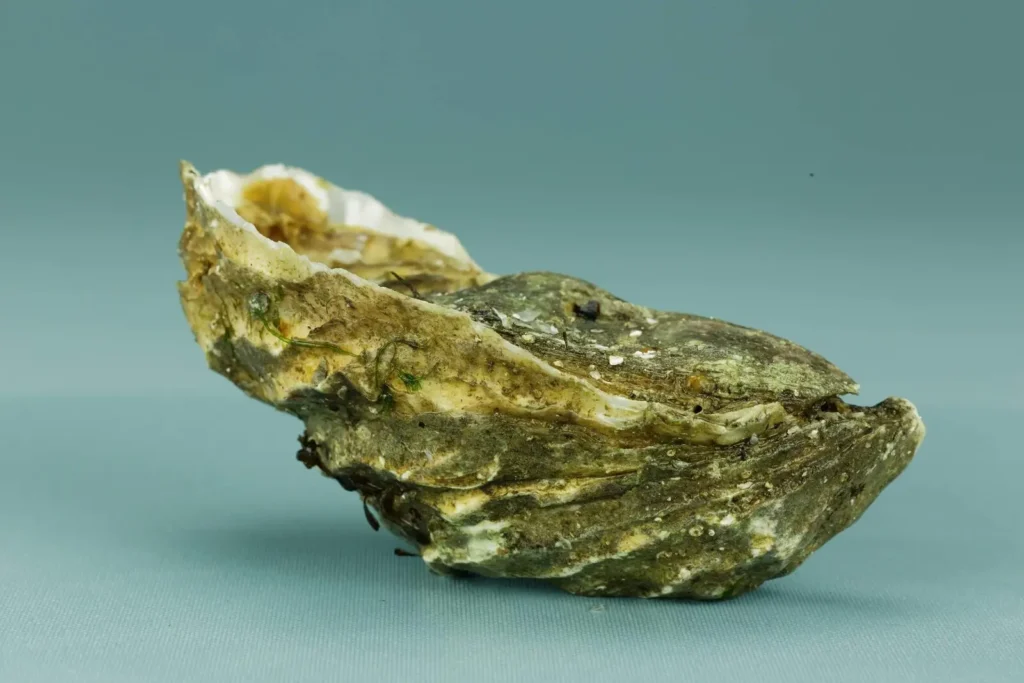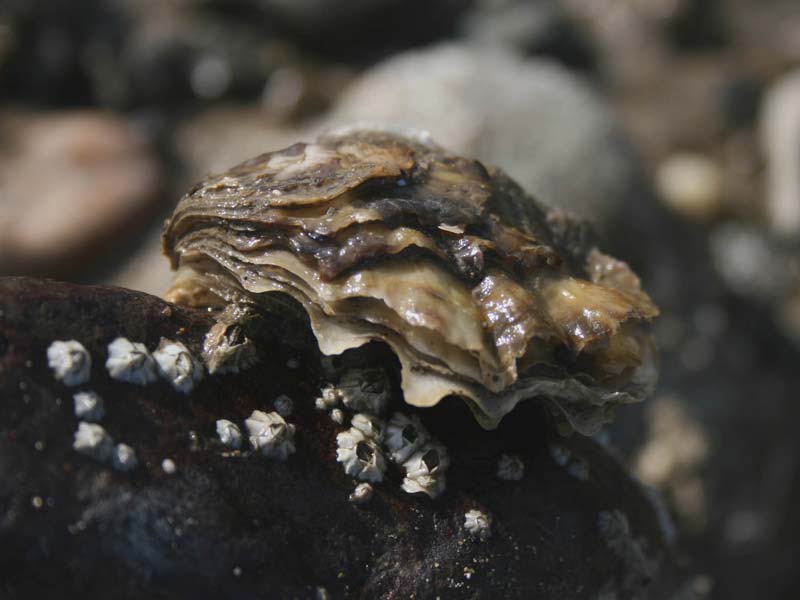Pacific Oyster (Magallana gigas, earlier Crassostrea gigasIt is one of the most common oyster species in the world. It is bred on farms and caught in the wild due to its tender meat and high nutritional value. In addition to their gastronomic value, these shellfish play an important ecological role, purifying water and supporting the health of marine ecosystems.
In this article, we will look at the biological features of the Pacific Oyster, its natural environment, lifestyle, reproduction, importance in the ecosystem, breeding methods, and its benefits to humans.

1. General characteristics and scientific classification
🔬 Scientific classification:
✔ The Kingdom: Animals (Animalia)
✔ Type: Shellfish (Mollusca)
✔ Class: Bivalve (Bivalvia)
✔ Row: Ostreoida
✔ Family: Oyster bars (Ostreidae)
✔ Gender: Magallana
✔ View: Pacific Oyster (Magallana gigas)
2. Description and physical characteristics
✔ Size: 8-30cm long, average length 15-20 cm
✔ Weight: up to 1 kg, although more often-100-200 g
✔ Life span: up to 20 years in nature, usually 2-4 years on farms
🔹 Main features of appearance:
✔ Bivalve carapace with wavy edges
The upper flap is rough, uneven, and often covered with algae or small organisms
✔ The lower sash is smoother, concave, used for attachment to the substrate
✔ Color ranges from gray and white to brownish
🔹 Interesting facts:
✔ Oysters can change their sex several times during their lifetime
✔ Can filter up to 200 liters of water per day
✔ The size and shape of the sink depends on the environmental conditions
3. Habitat and habitat
🌍 Natural range:
✔ Western Pacific Coast (Japan, Korea, China)
📍 Artificial area (introduction):
✔ Europe, North America, Australia, South America, Africa
🔹 Typical habitats:
✔ Shallow sea coasts
✔ Lagoons, bays, estuaries
✔ Rocky and sandy substrates
🔹 Adapting to the environment:
✔ Can survive in brackish water
✔ Tolerates temperature fluctuations well (from -2°C to +35°C)
✔ Withstands low oxygen levels in water

4. lifestyle and behavior
🔹 Basic behavioral traits:
✔ Leads an immobile lifestyle by attaching itself to hard surfaces
✔ Oysters open their flaps for water filtration and nutrition
✔ Activity depends on the water temperature - in the colder months, they almost do not grow
🔹 Enemies:
✔ Starfish
✔ Some types of crabs
✔ Rockfish and other predatory fish
5. reproduction and development cycle
💞 Reproductive Biology:
✔ Hermaphrodites - can change their gender during their lifetime
✔ Spawning occurs in the warm season (at temperatures above 20°C)
✔ A single female can release up to 50 million eggs
🔹 Stages of development:
Fertilized eggs turn into larvae (trochophores)
✔ Larvae swim in the water column for several weeks
✔ They settle on hard surfaces and begin to form a shell
6. Nutrition and role in nature
🍽 What does an oyster eat?
✔ Phytoplankton
✔ Small organic particles
✔ Some bacteria and micro-organisms
🔹 Power method:
✔ The oyster opens its flaps and filters the water, trapping food particles
✔ Cleans the water from excess organic material
🔹 Environmental role:
✔ Natural Filter: purifies water, improving the quality of marine ecosystems
✔ Forms oyster reefs-an important environment for fish and other marine creatures

7. breeding and use in agriculture
🏗 Farm cultivation:
✔ Use special cages or suspended structures
✔ Young oysters are bred under controlled conditions
✔ Mature for sale in 2-4 years
🔹 Main producing countries:
✔ China
✔ France
✔ USA
✔ Japan
8. human benefits
🍽 Nutritional value:
✔ Rich in protein (up to 10% by weight)
✔ High in omega-3 fatty acids
✔ A source of zinc, iron, calcium and iodine
🩺 Health Benefits:
✔ Supports the functioning of the cardiovascular system
✔ Improves the condition of the skin, hair and nails
✔ Stimulates the immune system
🔹 Interesting facts:
✔ Oysters are considered an aphrodisiac due to their high zinc content
✔ Raw oysters have a delicate, slightly salty taste, reminiscent of sea water
Conclusion
The Pacific oyster is not only a delicacy, but also an important ecological element of marine ecosystems. Due to its unique properties, this clam promotes water purification, supports biodiversity and provides people with valuable nutrients. Growing oysters on an industrial scale helps preserve natural populations, reducing pressure on wild ecosystems.
So next time you try oysters, remember-this is not only an exquisite delicacy, but also a natural filter of the ocean! 🌊 🦪